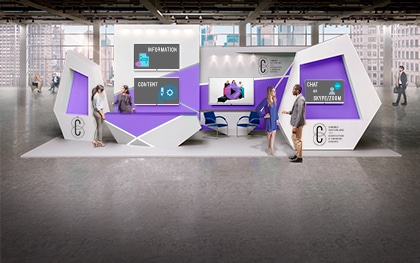Many associations and corporate companies are faced with the difficulty of keeping conference attendance figures up. Developing a clear marketing strategy will be your key to success. Researching and understanding your delegates will enable you to be more creative and flexible. It will also allow you to stretch your budget further as you will only be using the best channels to communicate to your target audience. But how do you do this efficiently? Below the 6 key steps to successfully market your event:
Step 1: Get to know your conference audience
It is essential to familiarise yourself with your delegates and find out why they attend your event. This information will help establish your unique selling points (USP’s). Some questions you will need to ask are:
- Who are your target audience?
- Where is your audience located? Local vs. International
- Who are your main competitors and what are they doing?
To answer these questions you can use tools such as a SWOT analysis as well as looking at past trends and attendance numbers. It is also important to talk to the industry, it is easier to work in collaboration with other associations and key stakeholders, than to try and work alone; remember, everyone is in the same situation.
Step 2: Set clear objectives for conference attendance
Once it is clear who your delegates are and what your event offers, it is essential to set clear tangible targets. This allows you to focus on the most important information and will give you clarity as to who you want to target and how. Your conference attendance objectives should detail how many attendees you want and what the mix of industry, country and other attendee demographic information should be.
By being very specific about your objectives, you can evaluate if your key messages are correct and if your selected communication channels are worthwhile.
Step 3: Determine your communication message
There are hundreds of ways to get your message across, but only a few will be effective for your event. First you will need to determine what you want to communicate. It is easy to get distracted by all the features of your event, however you need to be focused on your USP’s: What does your delegate want from your event? Some examples could include:
- Programme content: delegates can be focused on the learning outcomes from your event. Well known key note speakers can help draw a lot of attention and encourage people to attend.
- Networking: events and conferences are key times for people to get together and discuss future collaborations and business, so make sure you also emphasise the networking opportunities available.
- Incentives: By offering special deals and discounts to register early you can get a better idea of your attendance numbers which can save you money.
- Another aspect you need to consider is how your message will look. The design should fit in with your message and be used consistency through all your marketing activities. The look and feel of your messages can increase the brand recognition of your event.
Step 4: Get your message across: determining the marketing mix
The success of getting your messages across to the right audience lies in the repetition factor. It is essential to repeat your key messages via different channels, so you will need to consider the quantity, frequency and type of media. Options you can utilise include:
- Email: this is an inexpensive way to create customised messages. However, be careful of spam filters and data protection laws.
- Direct Mail: This can be an expensive, but effective tool. Its usefulness will depend on the quality of your database.
- Social media: Social media is very effective way of communicating directly with your target group.
- Website calendars and links: an inexpensive and effective way of promoting your event through publishing your details on other websites that your delegates visit.
- Advertising: It will target people who are not on your database and can boost your event’s creditability. You can even try and barter to save money.
- Other exhibitions and conferences: Very effective way of reaching your target audience through attending or exhibiting at relevant events and conferences.
Step 5: Execution of Marketing Activities
Once you have figured out your messages and how you will get them across, it is time for the actual work to start. Coordinating the execution of all the marketing activities can be complicated, particularly if your event is international. Your planning to increase conference attendance should be logical and easy to understand. Make sure you detail all the activities, deadlines and the person responsible for each task. Remember to communicate the list to all parties involved and ensure everyone understands who is responsible for each specific element. This avoids any confusion over the tasks in the long run.
Step 6: Lessons Learned!
Don’t forget to evaluate your event to find out who your participants were and how they found out about your event. This will let you know which marketing tools were effective and which were not, potentially saving you time and money the next time around. It is also wise to find out what they thought of the event, what they liked and what did they disliked. This all is crucial information for your next campaign.
And remember, it is worth investing time in creating a marketing plan to ensure you know who will be attending now and also in the future. …good luck!
Schlagworte: Attendance level, Audience, Communication, Conference Marketing, Event Marketing, Marketing mix
Technologie/Trends: Ausstellung und Sponsoring, Digitales Marketing für Kongresse, Face Recognition, Konferenz Inhalte - Content, Konferenz-Trends, Konferenzdesign, Kongress und Event Speaker, Kongressbudget, Kongresse für Verbände, Networking-Veranstaltung, Planung von Konferenzen, Professioneller Kongressorganisator, Soziale Medien für Kongresse, Teilnahme an dem Kongress, Veranstaltungstechnik




